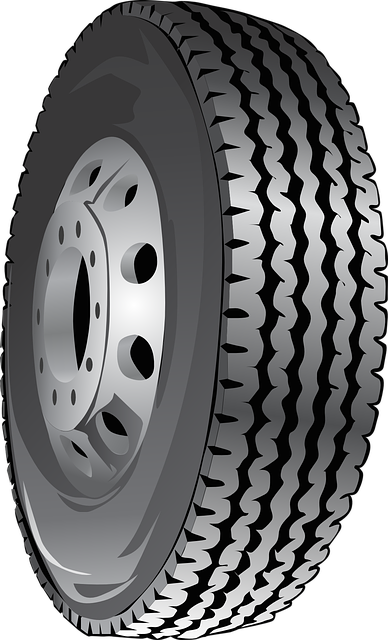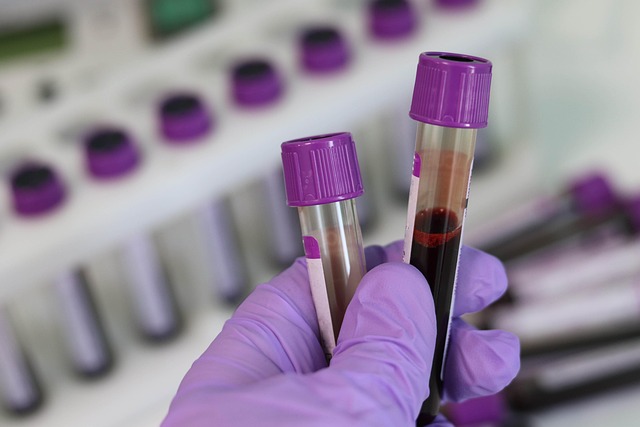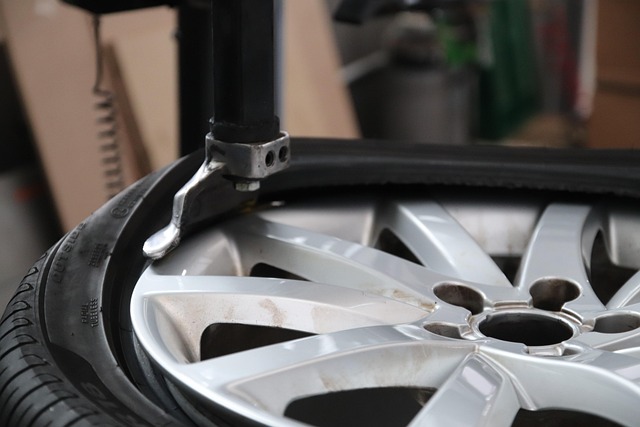Revolutionizing Dent Repair: Technologies Driving Unprecedent Reliability
Dent repair technologies have evolved dramatically from 20th-century basics to modern, advanced mach…….
In the ever-evolving automotive industry, dent repair technologies have emerged as a game-changer, transforming the way vehicle damage is assessed, managed, and restored. This innovative field combines advanced engineering, materials science, and precision techniques to address one of the most common issues faced by car owners: dents and scratches on their vehicles’ surfaces. As the global automotive market continues to thrive, dent repair technologies play a pivotal role in maintaining the aesthetics and value of vehicles, contributing to a more efficient and eco-conscious approach to vehicle maintenance. This article delves into the intricacies of dent repair technologies, exploring its historical evolution, current impact, future potential, and the challenges it faces. By the end, readers will gain a comprehensive understanding of this dynamic sector.
Definition: Dent repair technologies refer to a suite of methods, tools, and systems designed to restore damaged automotive surfaces by removing dents, scratches, and other deformities. This process involves various techniques, from manual methods to advanced automated systems, all aimed at returning vehicles to their pre-damage condition or an even, restored state.
Core Components:
Assessment and Detection: The initial step involves thoroughly examining the damaged area using visual inspection, specialized lighting, and digital imaging to determine the extent of the dent and its underlying structure.
Dent Removal: This is the heart of dent repair technology. Techniques range from manual methods like malletting and pulling (for shallow dents) to more advanced automated processes such as pneumatic tools, robotic systems, and PDR (Paintless Dent Repair) machines that use specialized bars or rods to gently push out the dented panel.
Painting and Finishing: Once the dent is removed, the area may require repainting to match the vehicle’s original color precisely. Modern dent repair technologies employ advanced paint matching techniques and automated painting systems to ensure a flawless finish.
Historical Context:
The concept of dent removal dates back to ancient times when blacksmiths would carefully hammer out creases from metal objects. However, the modern dent repair industry began to take shape in the mid-20th century with the rise of mass-produced automobiles. As vehicles became more affordable and common, so did dents, leading to the development of specialized tools and techniques. The 1970s and 1980s saw significant advancements, with the introduction of PDR methods that revolutionized dent repair by eliminating the need for extensive painting and body work. Today, dent repair technologies continue to evolve, driven by consumer demands for faster, more efficient, and eco-friendly solutions.
Dent repair technologies have a profound global impact, serving as a critical component of the automotive aftermarket industry. According to a recent report by Market Research Future (MRFR), the global dent repair market is projected to reach USD 9.5 billion by 2027, growing at a CAGR (Compound Annual Growth Rate) of 4.8% from 2020 to 2027. This growth is attributed to several key trends:
Increasing Vehicle Ownership: With rising disposable incomes in developing countries, the global motor vehicle fleet is expanding, leading to more vehicles on the road and subsequently, more dented cars requiring repair.
Eco-Consciousness: The automotive industry’s shift towards sustainability has influenced dent repair technologies, with a growing emphasis on environmentally friendly methods and materials. PDR, for instance, reduces waste and energy consumption compared to traditional body shop repairs.
Technological Advancements: The integration of technology in dent repair, such as advanced imaging systems, robotics, and AI-driven paint matching software, is transforming the industry, improving precision and efficiency.
Regional Insights:
North America: Known for its robust automotive manufacturing base, North America leads in dent repair technology adoption, with a high density of specialized repair facilities and trained technicians.
Europe: Stringent environmental regulations in Europe have driven innovation in eco-friendly dent repair methods, positioning the region as a hub for sustainable automotive solutions.
Asia-Pacific: Rapidly growing economies in this region are fueling demand for dent repair services, with China and India emerging as significant players in both domestic and international markets.
The economic aspects of dent repair technologies are multifaceted, impacting both the automotive industry and consumers.
Market Dynamics:
Aftermarket Industry Growth: The global aftermarket for automotive parts and services is a significant contributor to the dent repair market’s expansion. As vehicles age, owners seek cost-effective solutions for repairs, making dent repair an attractive option.
Competition and Pricing: The dent repair industry is highly competitive, with various service providers offering PDR, traditional body shop repairs, or mobile dent repair services at different price points to cater to diverse consumer needs.
Investment Patterns:
Automotive manufacturers invest in dent repair technologies to:
Consumer Behavior:
Consumers are increasingly price-conscious but also demand high-quality repairs. They prefer:
The field of dent repair technologies is witnessing a surge in innovation, driven by technological breakthroughs that offer improved efficiency, precision, and sustainability.
Key Advancements:
AI and Machine Learning: Artificial intelligence enhances paint matching accuracy and allows for predictive analysis of dent removal outcomes. Machine learning algorithms can optimize repair processes, reducing labor costs and improving customer satisfaction.
Robotics and Automation: Advanced robotic systems with AI capabilities can perform precise dent removal, especially in complex areas. These robots can work alongside human technicians, increasing productivity and consistency.
Digital Imaging and 3D Scanning: High-resolution digital imaging and 3D scanning technologies enable detailed visualization of damaged areas, aiding in accurate assessment and repair planning. This technology is crucial for custom paint matching and restoring intricate vehicle designs.
Eco-Friendly Materials: Researchers are developing biodegradable and recycled materials for dent repair, aligning with the global push for sustainability. These materials reduce waste and offer a more environmentally conscious alternative to traditional paint and fillers.
Future Potential:
Enhanced Real-Time Repair Solutions: The integration of AR (Augmented Reality) technology could enable technicians to perform repairs with real-time guidance, improving precision and reducing repair times.
Printed Repairs: 3D printing technology may revolutionize dent repair by allowing for on-demand, custom-fit parts, particularly for rare or classic vehicle models.
Telematics Integration: As connected cars become more prevalent, dent repair technologies could be integrated into telematics systems, enabling remote diagnostics and repair scheduling.
The development and deployment of dent repair technologies are influenced by various policies and regulations aimed at ensuring safety, quality, and environmental protection.
Key Considerations:
Product Safety Standards: Organizations like SAE International establish standards for automotive repair materials and equipment, including dent repair tools and paints, to ensure product safety and performance.
Environmental Regulations: Strict environmental laws, such as those governing volatile organic compound (VOC) emissions from paints and solvents, shape the development of eco-friendly dent repair solutions.
Workplace Safety: Occupational health and safety regulations govern the working conditions of technicians, ensuring they have adequate training and protective gear when handling tools and chemicals.
Consumer Protection: Laws protecting consumers from unfair business practices and ensuring transparent pricing promote trust in the industry, encouraging customers to opt for legitimate dent repair services.
International Harmonization:
Given the global nature of the automotive industry, international collaboration is crucial for harmonizing standards and regulations. Organizations like the International Organization for Standardization (ISO) work towards creating universal standards for automotive repairs, including dent repair technologies, to facilitate cross-border trade and ensure consistent quality.
Despite its numerous benefits, the dent repair industry faces several challenges that shape its landscape and influence technological advancements.
Main Challenges:
Training and Skilled Workforce: Adequate training is essential for technicians to master modern dent repair techniques. The constant evolution of technology requires continuous education, posing a challenge in maintaining a skilled workforce.
Cost vs. Quality Trade-off: While cost-effective solutions are appealing to consumers, balancing low prices with high-quality repairs remains a hurdle. Inexpensive tools and materials may compromise the durability of repairs.
Regulatory Compliance: Keeping up with evolving regulations can be complex and costly, particularly for smaller repair shops. Staying informed about safety and environmental standards is crucial but requires significant resources.
Proposed Solutions:
Standardized Training Programs: Developing comprehensive training modules recognized globally can help address the skilled workforce challenge. Online platforms offering continuous education could further enhance accessibility.
Quality Assurance Standards: Establishing clear quality benchmarks and certification programs for dent repair services would ensure consumer trust and promote fair competition.
Government Support: Governments can play a role in fostering innovation by providing incentives and grants to research institutions and businesses working on eco-friendly technologies and training initiatives.
Case Study 1: PDR Revolution in Japan
Japan, known for its advanced automotive industry, has embraced Paintless Dent Repair (PDR) with remarkable success. The country’s high population density and limited parking space led to a surge in minor dented vehicles. Local businesses developed specialized PDR tools and techniques, offering quick, affordable repairs. This case illustrates how urban challenges can drive technological innovation in dent repair.
Case Study 2: Eco-Friendly Initiative in Europe
In response to stringent EU environmental regulations, several European companies have pioneered eco-friendly dent repair solutions. By developing water-based paints and biodegradable filler materials, these businesses have reduced the industry’s carbon footprint while meeting consumer demands for sustainable repairs. This initiative showcases how regulatory pressures can foster environmentally conscious technologies.
Case Study 3: Mobile Dent Repair Services in Urban America
The bustling cities of the USA present unique challenges for dent repair due to high traffic volumes and limited access to traditional repair facilities. Mobile dent repair services have gained popularity, offering convenient solutions directly to consumers’ locations. This trend highlights the potential for technology to disrupt traditional business models and cater to urban customers’ needs.
The future of dent repair technologies is filled with promising possibilities, driven by technological breakthroughs, shifting consumer preferences, and a growing focus on sustainability.
Emerging Trends:
Smart Repairs: The integration of IoT (Internet of Things) devices and sensors into vehicles could enable self-diagnosing cars that identify minor dents and guide owners to suitable repair solutions.
Digital Twin Technology: Creating digital replicas of vehicles with detailed 3D models can aid in precise dent removal and repainting, ensuring repairs match the vehicle’s original specifications.
Growth Areas:
Automotive Sharing Economy: As car-sharing services become more prevalent, efficient and cost-effective dent repair technologies will be essential for maintaining fleet vehicles, catering to a new generation of consumers.
Electric Vehicle (EV) Repairs: With the rise of EVs, dent repair technicians will require specialized training in handling these unique vehicle types and addressing specific repair challenges associated with their construction.
Strategic Considerations:
Sustainability Focus: Companies that prioritize eco-friendly technologies and materials are likely to gain a competitive edge as consumers become more environmentally conscious.
Data Analytics Integration: Utilizing data analytics to predict dent patterns, optimize repair processes, and personalize customer experiences will be a key differentiator for forward-thinking businesses.
Global Collaboration: International partnerships can accelerate technological advancements and ensure the industry meets global standards while catering to diverse regional needs.
Dent repair technologies have come a long way since their early beginnings, evolving into a dynamic field that plays a critical role in the automotive industry. From manual techniques to advanced robotics, this technology has restored vehicles worldwide, addressing aesthetic and structural issues while contributing to sustainability and efficiency. As the global market continues its upward trajectory, dent repair will remain a vital component of vehicle ownership, constantly adapting to technological advancements, shifting consumer preferences, and regulatory demands.
Q: How does dent repair technology benefit the environment?
A: Dent repair technologies contribute to environmental sustainability through eco-friendly materials, reduced waste, and energy-efficient processes like PDR. These practices minimize the industry’s carbon footprint and preserve natural resources.
Q: Can dent repair restore a vehicle to its original condition?
A: Yes, modern dent repair techniques can return vehicles to their pre-damage state or even improve upon it. Advanced repainting technologies ensure a flawless finish that closely matches the original color and appearance of the vehicle.
Q: Are there any risks associated with PDR?
A: While PDR is generally safe, there are potential risks if performed incorrectly. Trained professionals minimize these risks by using specialized tools and techniques. Over time, as technology advances, the safety profile of PDR continues to improve.
Q: How can consumers ensure they receive quality dent repair services?
A: Consumers can choose reputable shops with certified technicians, check online reviews, and inquire about warranties or guarantees. Quality assurance standards and certification programs provide further reassurance regarding the expertise and reliability of service providers.
Q: What role does technology play in the future of dent repair?
A: Technology will drive innovation in dent repair, offering more efficient, precise, and eco-friendly solutions. Advanced robotics, AI, and digital imaging will enhance repair processes, while IoT and connectivity will enable new levels of convenience and vehicle diagnostics.

Dent repair technologies have evolved dramatically from 20th-century basics to modern, advanced mach…….

Dent repair technologies like Paintless Dent Repair (PDR) have revolutionized auto body work, offeri…….

The dent repair technologies sector is experiencing a significant shift towards non-invasive, advanc…….

Dent repair technologies have evolved dramatically, transitioning from manual, time-consuming proces…….

Emerging technologies like robotics, AI, and 3D printing are revolutionizing dent repair services. T…….

Dent repair technologies have evolved dramatically, using advanced tools, software, digital imaging,…….

Modern dent repair technologies like CAD systems and laser technology have revolutionized automotive…….

Dent repair technologies have revolutionized the automotive industry, shifting from manual, labor-in…….

The dent repair industry is undergoing a significant transformation driven by technological advancem…….